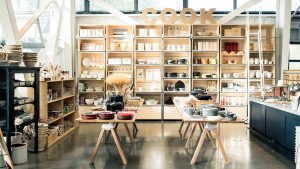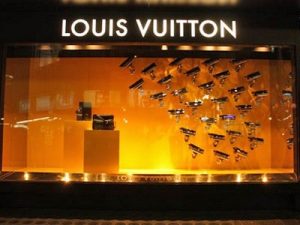By Ar S. Shadab Alam
User centered interior of retail store— provide designers a better understanding of designing spaces which are humanistic, inclusive, and resolve peoples’ day-to-day issues. It can be successfully achieved by consumer observation and participation. How a customer will perceive the product or the merchandise is determined by how the layout of the store will guide and interact with them. The design also requires to have the direct reflection of the brand which plays an important role in staying in competition with the present day e-commerce trend. Thus the key challenges which require utmost attention while designing a retail store interior are –
- How to create a user-centric experience which encourages customers to come visit the store? and,
- How will the store stand out from its competitors?
- Visual Merchandising Strategy
It is the core strategy. It is how the store speaks, and how the store communicates with its customers through visual graphics and presentation of the merchandise. A well designed entrance, strategically placed furniture, fixture, promotional graphics and product display together help create a unique customer experience. It is what influences the customer behavior and makes their journey unique, efficient, and memorable.
- Zoning Strategy
It is the second most important strategy of the retail store design. Customers respond to how and where the products are placed. A zoning strategy combines visual merchandising and layout design to highlight and feature high-value products. Creating zones using innovative and creative furniture layout, merchandise exhibition, and instructional signage helps separating areas of display. The product displays should also act as a speed-breaker to have the customer spend more time in the display zone.
- Lighting Strategy
Proper lighting is more than just making sure the customer can see and interact with the merchandise. When done well, light can help structure and influence the customer’s mood during shopping. Store design should include lighting solutions to focus and highlight specific areas of the store to draw in customer’s attention, and create an environment that works in sync with the retail brand and the merchandise offered.
- Signage Strategy
Signage serves multiple purpose for retailers. Apart from providing the product information for specific merchandise, it helps customers navigate the store efficiently and create the desired value perception. They also act as the graphic representation of the retailers brand and merchandise.
- Display Strategy
Along with the store design and layout design, strategic placement of the product merchandise display also helps set the stage for the customer’s overall experience while moving around the store. The selection of the type and placement of displays, and their furniture too play a crucial role in enhancement of the overall design.

Photo: http://tolleson.com/work/healdsburg-shed/brand-refresh/
- Window Strategy
Windows welcome the customers from the outside and draw them into the store. Thus, the window display requires careful attention to lighting, size of display units, type of merchandise featured, and signage. Since the customer has yet to enter the store, a window display must combine all of the visual merchandising elements to successfully pick the customer’s interest and promote the store’s brand.

Photo: Flickr/ Thai Pham
Tags: visual merchandising